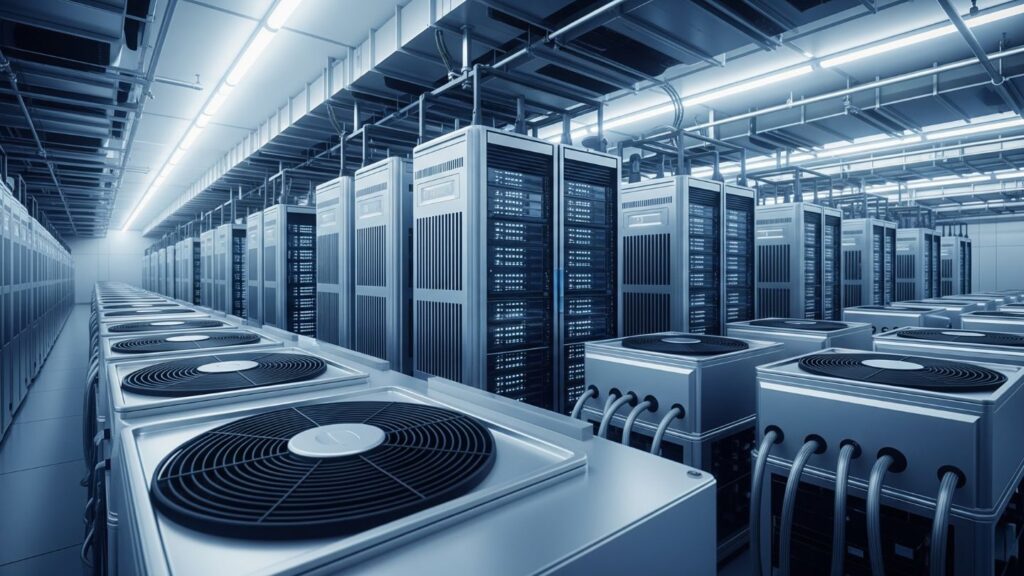
As artificial intelligence becomes increasingly central to business operations and technological innovation, the environmental impact of AI computing has emerged as a critical concern. Energy-efficient computing for AI represents a convergence of technological innovation and environmental responsibility, offering solutions that dramatically reduce power consumption while maintaining or improving AI performance capabilities.
The AI Energy Challenge
The exponential growth of AI applications has created unprecedented demands on computational resources and energy consumption. Understanding the scope of this challenge is essential for developing effective solutions.
Current Energy Consumption Patterns
- Training Large Models – Training GPT-3 consumed approximately 1,287 MWh of electricity
- Data Center Growth – AI workloads account for 10-20% of total data center energy consumption
- Inference Costs – Daily operation of AI systems consumes significant ongoing energy
- Cooling Requirements – AI hardware generates substantial heat requiring additional cooling energy
- Infrastructure Expansion – Rapid scaling of AI infrastructure compounds energy demands
Environmental Impact Assessment
The environmental implications of AI computing extend beyond direct energy consumption:
- Carbon Emissions – AI training and inference contribute significantly to global carbon footprint
- Resource Consumption – Manufacturing AI hardware requires substantial material and energy resources
- E-Waste Generation – Rapid hardware obsolescence creates electronic waste challenges
- Water Usage – Data center cooling systems consume vast quantities of water
- Grid Strain – Large AI installations can strain local electrical grid infrastructure
Economic Drivers for Efficiency
Beyond environmental concerns, economic factors drive energy efficiency adoption:
- Operating Cost Reduction – Energy represents 30-50% of data center operating costs
- Regulatory Compliance – Increasing environmental regulations and carbon pricing
- Competitive Advantage – Energy efficiency as a differentiating factor
- Investor Pressure – Growing ESG (Environmental, Social, Governance) investment criteria
- Public Relations – Corporate sustainability commitments and public image
Revolutionary Energy-Efficient Hardware Solutions
Next-Generation AI Processors
Innovative processor designs specifically optimized for AI workloads offer dramatic efficiency improvements:
- Specialized AI Chips – Custom silicon designed exclusively for AI operations
- Neuromorphic Processors – Brain-inspired chips that dramatically reduce power consumption
- Optical Computing – Light-based processors that eliminate electrical switching energy
- Quantum Processing Units – Quantum processors for specific AI optimization problems
- In-Memory Computing – Processing data where it’s stored to eliminate transfer energy
Advanced Cooling Technologies
Innovative cooling solutions reduce the energy overhead of thermal management:
- Liquid Cooling Systems – Direct liquid cooling for high-performance processors
- Immersion Cooling – Submerging hardware in dielectric fluids for efficient heat removal
- Free Air Cooling – Utilizing ambient temperatures for natural cooling
- Heat Recovery Systems – Capturing waste heat for building heating or other applications
- AI-Optimized Thermal Management – Intelligent cooling systems that adapt to workload demands
Memory and Storage Optimization
Efficient memory and storage technologies reduce data movement energy:
- High-Bandwidth Memory – Faster memory access reducing processing time and energy
- Storage-Class Memory – Persistent memory that combines speed with efficiency
- Compression Technologies – Reducing data size to minimize transfer and storage energy
- Edge Storage – Localized storage reducing network transmission energy
- Intelligent Caching – Predictive caching systems that minimize data retrieval energy
Getting Started: Your Energy Efficiency Roadmap
To begin implementing energy-efficient AI computing:
- Conduct an energy audit – Assess current energy consumption and identify improvement opportunities
- Set efficiency targets – Establish clear, measurable goals for energy reduction
- Prioritize initiatives – Focus on high-impact, cost-effective efficiency improvements
- Implement monitoring systems – Deploy tools to track energy consumption and efficiency gains
- Engage stakeholders – Build organization-wide commitment to energy efficiency
- Scale successful programs – Expand proven efficiency initiatives across the organization
The Sustainable AI Future
Energy-efficient computing for AI represents more than just cost reduction – it’s about ensuring that artificial intelligence development remains sustainable and responsible as it continues to transform our world. The organizations that prioritize energy efficiency today will be best positioned to leverage AI’s full potential while meeting growing environmental and social responsibilities.
The convergence of technological innovation and environmental necessity is driving unprecedented advances in computing efficiency. From revolutionary hardware architectures to intelligent software optimization, the tools for sustainable AI are rapidly becoming available and economically attractive.
The future of AI depends on our ability to make it sustainable. By investing in energy-efficient computing solutions now, organizations can reduce costs, improve performance, meet environmental goals, and contribute to a more sustainable technological future. The time to act is now – the planet and your business depend on it.
 technewsdaily.com
technewsdaily.com
